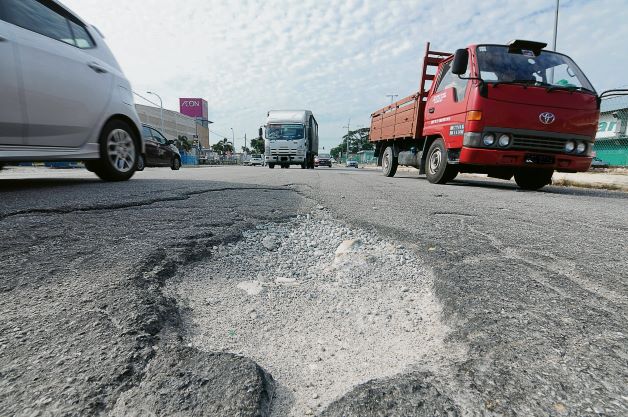Potholes and Poor Pavement

The condition of road surfaces plays a significant role in maintaining safe driving conditions. While drivers often focus on elements such as traffic lights, signage, and speed limits, the quality of the road itself is equally important. In Malaysia, where diverse weather conditions and heavy traffic wear down roads over time, poor road surface quality is a critical factor that can directly contribute to accidents and vehicle damage.
Poor road surfaces, particularly those with potholes, cracks, and uneven pavement, pose several risks to both drivers and pedestrians. The main hazards include increased risk of accidents, vehicle damage, hazards for motorcyclists and cyclists, and water accumulation leading to hydroplaning. Potholes and other road damage can cause drivers to swerve suddenly to avoid them, potentially leading to loss of control and collisions with other vehicles or roadside objects. At high speeds, such evasive maneuvers can be especially dangerous, increasing the likelihood of serious accidents.
Constant exposure to uneven road surfaces can also damage vehicles, particularly tires, suspension systems, and steering mechanisms. Sudden impacts from hitting potholes can result in tire blowouts or bent rims, which may lead to accidents due to loss of control. Moreover, long-term damage to the suspension or alignment can affect how the vehicle handles, further compromising road safety. For motorcyclists and cyclists, the risks posed by potholes and poor pavement are even more significant. Unlike cars, which have more stability, two-wheeled vehicles are prone to losing balance when they hit uneven surfaces. A motorcyclist who encounters a pothole at high speed might be thrown off balance, leading to serious or even fatal accidents. Similarly, cyclists are at risk of injury if they cannot avoid cracks or damaged sections of the road.
Damaged road surfaces can also lead to water pooling in potholes or depressions during rain, increasing the risk of hydroplaning. Hydroplaning occurs when a layer of water forms between the tires and the road surface, causing vehicles to lose traction. In Malaysia, where heavy rain is common, water accumulation on poor roads significantly heightens the risk of accidents.
Several factors contribute to the deterioration of road surfaces over time. Weather conditions, such as heavy rainfall, intense sunlight, and flooding, can cause cracks to form in the road surface. These cracks eventually develop into potholes due to the expansion and contraction caused by temperature changes and water infiltration. Additionally, heavy traffic, especially from frequent use by heavy vehicles like trucks and buses, accelerates the wear and tear of roads, leading to surface damage and cracking. Inadequate maintenance also plays a role; regular maintenance is essential to prevent small cracks from developing into major potholes. In many areas, however, road repairs may be delayed due to budget constraints or logistical challenges, resulting in deteriorated road conditions.
To minimize the dangers of poor road conditions, several preventative measures can be taken. Regular road maintenance is crucial; timely repair of minor cracks and potholes can prevent them from worsening and causing more significant road hazards. Regular road inspections and maintenance extend the lifespan of road surfaces and ensure safe travel. Addressing potholes as soon as they form is one of the most effective ways to improve road safety, as filling them quickly prevents them from growing larger and causing further damage to vehicles or accidents. Ensuring that roads have adequate drainage systems can also prevent water accumulation, which often leads to surface damage. By minimizing water pooling on roads, the risk of hydroplaning and surface deterioration is reduced. Additionally, constructing roads with durable materials suited to the local climate and traffic conditions can help prevent premature wear and tear. In Malaysia, where roads experience a combination of heavy rain and high temperatures, using materials resistant to water infiltration and heat expansion can improve road longevity.
The Road Accident Management System (RAMS) plays a vital role in identifying areas with poor road conditions and tracking accident-prone zones linked to road surface quality. By collecting data on accidents and road conditions, RAMS can help local authorities prioritize road repairs and ensure that areas with significant deterioration are addressed promptly. This system allows for a more proactive approach to road maintenance, ensuring that resources are directed toward improving the most critical areas.
In conclusion, the quality of road surfaces is an often-overlooked yet essential factor in maintaining road safety. Potholes, cracks, and uneven pavement not only increase the risk of accidents but also cause significant damage to vehicles and present hazards to motorcyclists and cyclists. In Malaysia, regular maintenance, timely pothole repairs, and improved drainage systems are essential to keeping roads safe. By using systems like RAMS, authorities can monitor road conditions more effectively and take action to improve road surface quality, ultimately reducing the number of accidents caused by poor infrastructure.

